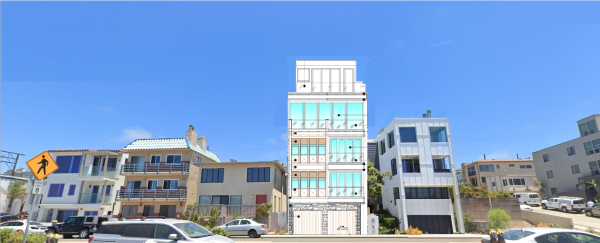
When Sidney Sheres woke up one April morning, he noticed a large red ‘X’ spray-painted on the melaleuca tree standing just outside his bedroom window.
For the nine years he’s lived in his Manhattan Village townhome, the tree had brought him shade and privacy. Upset, he peeled off the papery bark until no trace of red remained.
The tree outside his bedroom window was one of six trees marked with red X’s in his courtyard, and among 70 to 90 others throughout the development of 400 town and court homes that face potential removal.

The Manhattan Village Homeowner Association, which governs the community, told Sheres that the crack in the cement strip that borders the melaleuca is grounds for its removal, he said. Sheres told the association in an April 12 email that losing the tree would leave a “scar on our property,” adding that if the tree were cut down, he’d consider selling his home and living elsewhere.
Upon being called for a request for comment about the trees on Thursday, Ed Simon, the association’s onsite community manager, said, “You mean the ones that are upheaving the sidewalks and destroying the buildings?” During the same phone call, Simon asked for a formal request for comment in writing, to which the homeowner association has not yet responded.
According to the landscaping section of the association’s rules and regulations, “Trees in the common area are maintained, removed and/or replaced by the Association. The Landscaping Committee with the approval of the Board of Directors determines the planting needs of the common area landscaping.”
Unsatisfied with the association’s explanation, Sheres hired an arborist to inspect the tree, which sits within his property line. Brandon Gill, arborist for American Arbor Care in Lomita, concluded that there’s no reason for the tree to be removed, according to an April 18 memo he wrote to Sheres, adding that the cracked cement can be repaired to preserve the tree.
Gill estimated that the tree has a value of $6,000 to $8,000. “There are no visible signs that the roots are threatening any sewer or underground lines,” he wrote.
The tree not only adds aesthetic appeal to the home, but also provides shade and blocks the wind, which helps conserve energy in the home, Gill wrote. “Trees in general add much needed oxygen to the air while filtering out harmful chemicals that we would otherwise be breathing in and trees are also natural habitats for many species of animals and insects,” he continued.

Sheres forwarded his report to Simon on Wednesday, April 18, asking that it be sent to the Landscaping Committee, which approves removal or alteration of common area landscaping. On the morning of April 19, Simon replied: “The Landscape Committee (LC) asked me to relay that they will review the report, however, that they are under no obligation to follow its recommendation.”
Sheres is unaware of who serves on the committee. “They don’t like residents to interfere with their decision-making process,” he said.
Three trees – one melaleuca and two small plum trees – have already been cut down in Sheres’ courtyard, he said, with no warning or permission. The city’s ordnance protecting trees exempts fruit trees.
The association later told him the trees were old and diseased. “I said, ‘How about replacing them?’ They said no,” he said. “I bought two plum trees on my own dime.”
If a tree trunk diameter is more than 12 inches and sits in the front or street side yard, it’s protected under the city’s tree ordinance, requiring a permit and compelling reason for removal.

The city’s tree ordinance states, “a property owner acknowledgement form is required to be signed prior to issuance of a permit when protected trees are on a property.”
Upon learning of the potential removals, the city asked to meet with the association to make sure the landscaping plans are consistent with the tree ordinance, said Planning Manager Laurie Jester.
The trees may have outgrown the areas they’re in or may be causing infrastructure damage, she said, adding that at this point, she doesn’t know the trees’ conditions. “We’ll certainly make sure that trees that are removed have replacements where it’s appropriate,” Jester said, adding that the city will likely have its arborist examine the trees.
Jester added that the association will have to send out notifications to the neighbors regarding what they’re proposing to do.
Ed McAuliffe, Manhattan Village resident since 1994, said he thought the tree removals were a good idea. “Trees are sometimes diseased and problematic. Roots, sometimes if they’re close to sidewalk, lift up the sidewalk,” he said, while walking his dog in the village one cloudy morning. McAuliffe added that he formerly headed the Landscaping Committee for two years.
Jester estimated that the city receives about 50 permit applications from property owners each year for tree removals. “I would say a majority of them we do approve,” she said. “In general, the intent of our tree ordinance is to preserve and protect trees but allows removals and replacements where it’s appropriate. So we will work with the HOA and ensure that that code is taken into account.”








